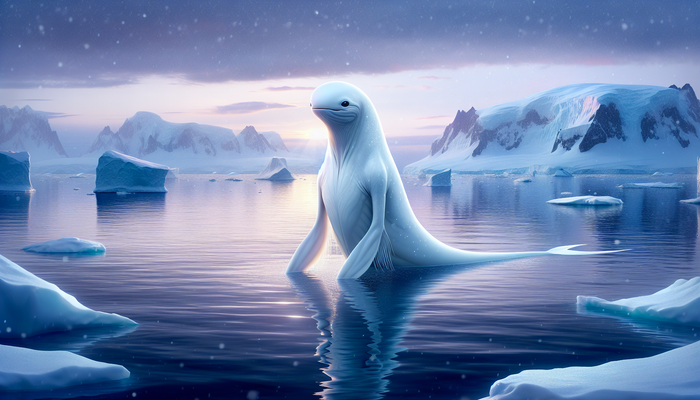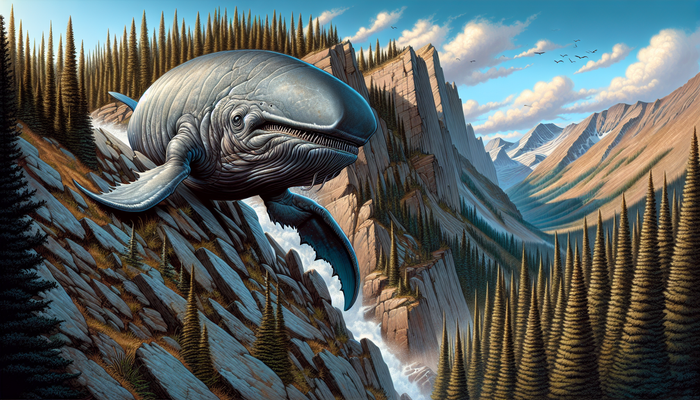Uncovering The Intriguing Bigfoot Giganto Theory

By Jack Sullivan, Bigfoot Researcher
Introduction
Could the legendary Bigfoot be a living relic of our prehistoric past? This tantalizing question has puzzled enthusiasts like myself and skeptics alike for decades. I'm here to explore the compelling evidence and arguments surrounding the theory that Bigfoot may be a descendant of Gigantopithecus blacki, an ancient giant ape that roamed Asia hundreds of thousands of years ago. As someone who has dedicated years to Bigfoot research, I'm fascinated by the connections between eyewitness accounts of this elusive creature and what we know about its potential ancestors. Join me as I uncover the origins of the Bigfoot Giganto Theory and delve into the latest findings that are shaping this intriguing hypothesis.
Gigantopithecus blacki: The Prehistoric Giant
Gigantopithecus blacki was an enormous primate that inhabited subtropical forests in areas of what is now China, Vietnam, and India during the Pleistocene epoch. Though the fossil record is limited, analysis of teeth and partial mandibles indicates this giant ape stood up to 10 feet tall and weighed a staggering 1,200 pounds - over twice the size of the modern gorilla.
Gigantopithecus was first identified in 1935 by anthropologist Ralph von Koenigswald, who came across some enormous primate molars for sale in a Hong Kong pharmacy. Since then, over 1,000 teeth and four lower jawbones have been discovered, allowing researchers to piece together details about the creature's physical characteristics and lifestyle.
This lumbering giant had a flat face, large nasal openings, and powerful jaws capable of grinding tough, fibrous vegetation. Thick dental enamel suggests it foraged for bamboo shoots, fruits, seeds, and other foods near the forest floor. Its sheer size indicates Gigantopithecus was likely not arboreal, instead walking on all fours across the landscape. By all accounts, this was one of the largest apes to ever exist.
The Bigfoot Connection
When examining accounts of Bigfoot encounters, the physical description often bears a striking resemblance to Gigantopithecus. Standing up to 10 feet tall and covered in hair, Bigfoot exhibits many of the features we would expect to see in a surviving population of giant ancient apes.
Bigfoot's size, gait, and behavior also align with what we know about Gigantopithecus. Reports often describe the creature walking with a tilted forward posture, which fits with a quadrupedal ape. Its elusive nature, nocturnal habits, and preference for dense forests also match the probable lifestyle of Gigantopithecus.
But how could this Asian ape be roaming the forests of North America? According to the Bigfoot Giganto Theory, Gigantopithecus may have crossed the Bering Land Bridge during the Pleistocene, dispersing through Siberia and into the Americas. This land bridge formed periodically during ice ages, allowing the migration of flora and fauna between continents. If Bigfoot is real, it seems plausible that its ancestors could have made this trek.
The Bigfoot Giganto Theory draws support from numerous eyewitness accounts and folklore describing giant, hairy hominids across cultures worldwide. While anecdotal, these stories suggest a possible surviving relic population of these presumed extinct apes.
Scientific Perspectives
Despite the intriguing connections, many scientists remain skeptical of the Bigfoot Giganto Theory due to the lack of definitive physical evidence. Without bones, fossils, or specimens, some argue it is premature to draw a link between Gigantopithecus and Bigfoot.
However, renowned primatologists like Jane Goodall have expressed openness to the possibility of an undiscovered giant ape in North America. Goodall has stated, "I'm sure they exist" due to the vast number of alleged sightings. Other experts, such as anthropologist George Schaller, also avoid dismissing Bigfoot reports outright.
Technological advancements provide hope that more evidence may surface. Camera traps, DNA analysis techniques, and audio recording devices could aid in proving the existence of an elusive hominid like Bigfoot. As technology improves, researchers gain new tools in their search for concrete data.
Cultural Impact of the Bigfoot Legend
Whether or not the creature truly exists, Bigfoot has left an undeniable impact on popular culture. It has been featured in movies, TV shows, video games, and advertising campaigns. Tourist attractions capitalize on the mystery, with Bigfoot museums and festivals celebrating the legend.
The search for Bigfoot also intersects with various academic fields. It inspires debate among anthropologists and fuels scientific curiosity about the possibility of an unidentified primate species. Enthusiasts form communities to share sightings, examine evidence, and coordinate research efforts.
For cryptozoologists who study hidden or rumored animals, Bigfoot represents the ultimate prize - a discovery that would shake mainstream science. The hunt for Bigfoot drives exploration of remote wildernesses and fosters connection between nature and legend.
Addressing the Skeptics
Despite the circumstantial evidence, many remain skeptical of the Bigfoot Giganto Theory for valid reasons. The lack of bones or fossils clearly attributed to Gigantopithecus in North America is a glaring omission. We would expect relic populations to have left some physical clues.
Skeptics also argue that most sightings can be explained by misidentification. Bears standing upright, shadows, or hoaxes could produce credible reports from those unaccustomed to forest wildlife. Without photographic proof, sound recordings, tracks, or DNA, alternative explanations seem plausible.
Some scientists propose Bigfoot legends arose merely from ancestral memories of large animals like mammoths imprinted in our collective consciousness. They urge restraint in equating folklore with zoological fact.
Perspectives from Believers
Yet those convinced of Bigfoot's authenticity counter that the creature's elusive nature makes evidence difficult to obtain. They argue that the remote terrain of Bigfoot's range could easily hide a small population.
Believers also stand by certain sightings they deem credible based on witnesses' familiarity with wildlife. Some accounts come from hunters and outdoorsmen able to identify common animals. A number describe close-range daytime encounters that leave little doubt of an unknown bipedal ape.
Advocates also point to promising technological breakthroughs on the horizon. Advanced DNA sequencing, thermal imaging drones, and machine learning-enabled image analysis could generate more definitive proof if given the chance. The search continues.
The Search for Answers
What can be said with certainty is that the question remains open. Expeditions into Bigfoot territory still uncover intriguing clues, from unusual vocalizations to tree structures. DNA samples, if authenticated, could confirm linkages to other primates. Motion-activated cameras improve each year, capturing rare wildlife on film.
Mainstream science proceeds slowly and skeptically, as it should. But the enduring mystery continues to captivate expert and amateur researchers alike. The search for Bigfoot, and its potential ties to Gigantopithecus, persists in the remote wildernesses of North America and beyond.
For my part, I remain dedicated to the challenge of documenting these elusive creatures. My analytical approach aims to validate the many credible accounts while filtering out the false leads. Technology aids me, but experience and tenacity matter most. The truth is out there, waiting to be discovered by those willing to search diligently.
Conclusion
In examining the evidence, it's clear the Bigfoot Giganto Theory remains scientifically plausible and culturally significant. While unproven, it offers a reasonable explanation for consistent eyewitness accounts of a giant, bipedal ape in North America. Skepticism is warranted, but the door is not shut.
Perhaps most compelling is what this mystery represents: The possibility that our natural world still holds secrets and wonders beyond current understanding. For me, the enduring legend of Bigfoot is a call to adventure, an invitation to explore the unknown.
The question now falls to a new generation of researchers picking up the mantle. Technology and new analytical techniques offer fresh hope of tangible breakthroughs. But real progress requires open and discerning minds willing to uncover the truth, wherever it may lead. Will you join the search?
From Bigfoot to UFOs: Hangar 1 Publishing Has You Covered!
Explore Untold Stories: Venture into the world of UFOs, cryptids, Bigfoot, and beyond. Every story is a journey into the extraordinary.
Immersive Book Technology: Experience real videos, sights, and sounds within our books. Its not just reading; its an adventure.



























